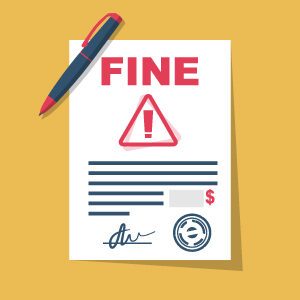
Fines for Abatement Contractors: Real Life Consequences
As one of our top classes of business, we understand the important role an insurance agent must play in helping their abatement contractors secure the right coverage. The very nature of the business and materials handled means pollution incidents or releases are a very real possibility. Safe business practices, proper training, and a well-designed insurance program can all work together to address these risks.
In their work, abatement contractors encounter exposures relating to:
- Failing to identify contaminants when surveying the property
- Sending samples for analysis, but the diagnostic laboratory results have errors.
- Mishandling pollutants on site
- Improperly storing or transporting pollutants
- Issues with proper disposal of contaminants or pollutants
- Producing an inaccurate post-abatement certification
- Failing to use an independent entity for post abatement testing.
Exposure to pollutants could result in illness for both abatement contractors and anyone else who encounters the contaminants. Health complications can occur after exposure onsite, in transit, or after disposal. If remedial action is insufficient or the contamination migrates from a disposal site, the ecological and human impact could grow exponentially. And environmental contractors can be held responsible for improper abatement years after the job is complete. If the contractor is found at fault, the potential for a claim, fine, or lawsuit is significant. For example, if the plaintiff has mesothelioma, the court system typically sides with the patient. According to Mealey’s Litigation report the average asbestos settlement is between $1 million and $1.4 million.
Here are some examples of abatement contractor related fines and lawsuits:
- In Massachusetts, an asbestos company was accused of “failure to uphold their duty to protect homeowners from the dangers of asbestos exposure”, AG Healey. The company allegedly failed to properly handle and remove asbestos containing material, including leaving some in the basement of one of the four homes. They were also accused of conducting asbestos sample analysis without certification.
- The U.S. Environmental Protection Agency (EPA) settled with 35 contractors and training providerson more than $274,000 worth of civil penalties for violations relating to the Lead Paint Renovation, Repair and Painting Rule. The violations include 21 instances where contractors failed to comply with required lead-safe work practices.
- In Oklahoma, a victim’s family sued a company for secondary asbestos exposure and wrongful death. The victim’s stepfather worked with drilling rig products that left loose residue on his clothing. The victim, who died at 38, had been exposed to asbestos through his stepfather’s clothing since childhood.
- A Chicago-based contractor has been handed a $400,000 penalty for alleged violations of federal Lead Renovation, Repair and Painting regulations known as the RRP rule. The EPA first discovered the alleged violations through customer complaints about a project in Evanston. The EPA reports that it learned that the company frequently subcontracted work to uncertified firms and did not use lead-safe work practices, perform required post-renovation cleaning, provide the EPA-required lead-based paint pamphlets to occupants, or establish records of compliance.
- The state of Massachusetts sued four companies regarding the asbestos abatement and storage at the former YMCA. The state sued the asbestos abatement company, the environmental consulting company, the general contractor, and the transportation company. This case highlights the importance of only taking on projects with companies the contractor trusts.
Abatement contractors and the pollution exclusion
Pollution exclusions can be particularly problematic for abatement contractors; some insurance carriers have exclusions for any work performed by subcontractors. Others will have exclusions for asbestos, lead, mold, or PFAS. Work related to an exterior insulation and finish system (EIFS) might also be excluded from a policy. Ensure your client fully understands their risk exposure before selecting a policy.
Additional coverage will broaden the protection afforded to the contractor. Contractors may require Contractors Pollution Liability (including Transportation Pollution Liability and Non-Owned Disposal Site coverage) for pollutants at jobsites, Site Pollution Liability insurance for any temporary storage of contaminants at the contractor’s owned location, Professional Liability, a Workers Compensation policy, Auto coverage, and an Excess policy. Contact Beacon Hill Associates today for more information on coverage for abatement contractors.
Type: Blog